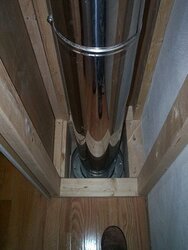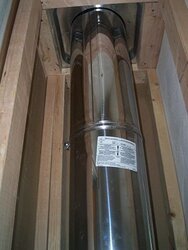http://www.heraldpalladium.com/articles/2009/10/03/local_news/883248.txt
Investigator says repairs were done improperly, allowing hot gases to escape, starting blaze
By ANDREW LERSTEN - H-P South Haven Bureau
Published: Saturday, October 3, 2009 1:09 PM EDT
BANGOR - Thursday's fatal house fire in Bangor underscores the need to leave chimney work to the professionals, said Sgt. Scott LeRoy, a state police fire marshal who investigated the blaze.
The fire killed all three occupants, David and Cindy Hoaglin and their 15-year-old daughter, Chelsea.
LeRoy got a close look at the fire-damaged, two-story house at 111 N. Center St. and concluded that a recent "amateur" chimney repair job caused the fire, he said.
"It appears that the chimney for the wood stove was recently worked on, and the work was done incorrectly," LeRoy said on Friday.
"Some sections of pipe were put in backward, and as a result it allowed the hot gases in the chimney to escape all around the joints," he explained. "Also, the clearances appeared to not be far enough, and the wall of the house behind the chimney was wood, versus drywall or brick. That's going to allow the hot gases to come out, in the attic space, and they'll collect and heat up until it heats up the wall (and ignites)."
LeRoy said he believes the chimney work was done recently, probably in the past couple of months.
"That (Wednesday night) was the first cold night of the season," he noted. "We had a frost that night." The fire reportedly started around 2 a.m. Thursday.
"It appears to have been an amateur job," LeRoy said. "Any work done on a chimney or wood stove should be done by a licensed installer, or there could be a very serious consequence."



